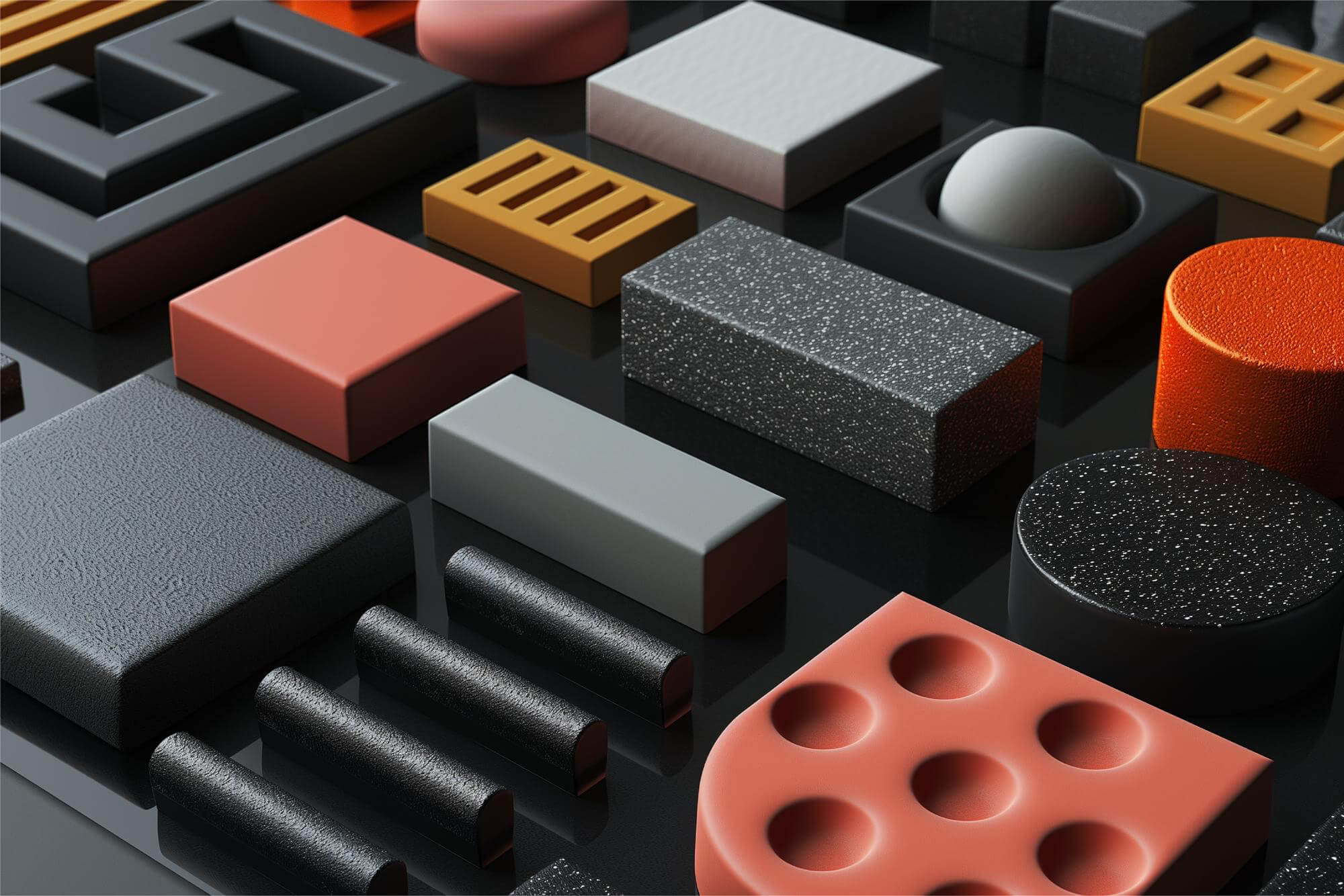Composite materials have become increasingly important in modern manufacturing due to their superior strength-to-weight ratios and excellent resistance to corrosion and fatigue. As industries such as aerospace, automotive, and construction continue to grow, the demand for CNC machined parts made from composites, particularly through turning processes, has risen significantly. However, turning composite materials presents unique challenges that differ from those encountered with traditional metals.
This article is designed to provide purchasing managers and procurement professionals with the necessary insights to choose the right CNC machining suppliers for composite material parts. By understanding the specific requirements of composite turning, you can make informed decisions that ensure the quality, precision, and longevity of your products.
Understanding Composite Materials in CNC Turning
Composite materials, such as Glass Fiber Reinforced Plastics (GFRP), Carbon Fiber Reinforced Plastics (CFRP), and Kevlar Fiber Reinforced Plastics (KFRP), are engineered to combine the benefits of multiple materials. These composites consist of a reinforcing fiber embedded in a polymer matrix, resulting in materials that are lightweight, strong, and resistant to many forms of environmental damage.
However, these very properties also make composites difficult to machine, especially when it comes to turning. Unlike metals, composites do not deform plastically before fracturing, which makes chip formation and cutting force management more challenging. Additionally, the heterogeneous nature of composites means that different phases (fiber and matrix) behave differently during machining, leading to issues such as delamination, fiber pull-out, and rapid tool wear.
Key Considerations for Turning Composite Materials
When turning composite materials, several key factors must be considered to achieve optimal results. These include tool selection, tool geometry, cutting parameters, and managing tool wear.
1. Tool Selection
The choice of cutting tools is critical in composite turning. The tools must be hard enough to cut through the tough fibers without causing significant tool wear while maintaining a sharp edge to prevent fiber pull-out and delamination.
- Carbide Tools: Carbide tools, especially those with diamond coatings, are commonly used for turning composites. They provide the necessary hardness and wear resistance required for machining abrasive fibers like those in GFRP and CFRP. Carbide grades K10 and K20 are particularly effective for this purpose.
- Polycrystalline Diamond (PCD) Tools: PCD tools are highly effective for turning composite materials. They offer exceptional hardness and can maintain sharp cutting edges for longer periods, making them ideal for high-speed turning operations. PCD tools are particularly recommended for CFRP due to their superior performance in handling carbon fibers.
Table 1: Comparison of Tool Materials for Composite Turning
| Tool Material | Hardness | Wear Resistance | Cost | Ideal Application |
|---|---|---|---|---|
| K10/K20 Carbide | High | Good | Moderate | General composite turning |
| Diamond-Coated Carbide | Very High | Very Good | High | GFRP, CFRP |
| PCD | Extremely High | Excellent | Very High | High-speed turning, CFRP |
2. Tool Geometry
Tool geometry plays a significant role in the effectiveness of turning operations on composite materials. The right tool geometry can minimize defects like delamination and fiber pull-out, which are common when machining composites.
- Rake Angle: A positive rake angle (5° to 10°) helps to reduce cutting forces and improve chip formation. However, for certain composites like CFRP, a neutral or slightly negative rake angle may be used to prevent fiber pull-out.
- Relief Angle: A relief angle of 5° to 7° is typically recommended. This angle helps to reduce friction between the tool and the workpiece, reducing heat buildup and minimizing tool wear.
- Cutting Edge Radius: A small cutting edge radius (0.4 to 0.65 mm) ensures a sharp edge, which is crucial for slicing through fibers cleanly and reducing the likelihood of delamination.
Table 2: Recommended Tool Geometry for Composite Turning
| Composite Material | Rake Angle | Relief Angle | Cutting Edge Radius |
|---|---|---|---|
| GFRP | 5° – 10° | 5° – 7° | 0.4 – 0.65 mm |
| CFRP | 0° – 5° | 5° – 7° | 0.4 – 0.65 mm |
| KFRP | 5° – 10° | 5° – 7° | 0.4 – 0.65 mm |
3. Cutting Parameters
Selecting the correct cutting parameters is essential to achieving high-quality finishes and extending tool life when turning composite materials. These parameters include cutting speed, feed rate, and depth of cut.
- Cutting Speed: For carbide tools, cutting speeds of 50 to 250 m/min are typically recommended for GFRP and CFRP. For PCD tools, higher speeds ranging from 200 to 800 m/min can be used, which also helps to reduce machining time.
- Feed Rate: The feed rate should be adjusted based on the composite material and the specific tool being used. A feed rate of 0.05 to 0.3 mm/rev is generally suitable for both carbide and PCD tools.
- Depth of Cut: The depth of cut should be kept below 7 mm to prevent delamination and fiber pull-out, especially when using carbide tools. PCD tools, due to their superior performance, can handle slightly deeper cuts without compromising surface quality.
Table 3: Recommended Cutting Parameters for Composite Turning
| Tool Material | Cutting Speed (m/min) | Feed Rate (mm/rev) | Depth of Cut (mm) |
|---|---|---|---|
| Carbide | 50 – 250 | 0.05 – 0.3 | <7 |
| PCD | 200 – 800 | 0.05 – 0.3 | <7 |
4. Managing Tool Wear
Tool wear is a significant concern in composite turning due to the abrasive nature of the fibers. To manage tool wear effectively, it is crucial to monitor tool condition regularly and use cooling techniques to minimize heat buildup.
- Coolants: Using appropriate coolants or lubricants can help dissipate heat and reduce tool wear. However, some composites may react adversely to certain coolants, so it is important to select a coolant that is compatible with the specific material being machined.
- Tool Monitoring: Regular inspection of the cutting tools during operation is essential. This helps in identifying signs of wear early, such as edge chipping or dulling, which can affect the quality of the machined surface.
Surface Quality Considerations
Achieving the desired surface quality in composite turning is crucial for parts that require precision and reliability. The surface finish can be affected by several factors, including the fiber orientation, cutting direction, and tool geometry.
- Fiber Orientation: The orientation of the fibers in relation to the cutting direction significantly impacts the surface finish. For instance, when the fibers are aligned at a 0° angle to the cutting direction, they tend to bend rather than shear, leading to a smoother surface. Conversely, fibers at a 45° angle may experience shear forces, resulting in a rougher finish.
- Cutting Direction: The direction of cutting relative to the fiber orientation should be carefully planned to minimize surface roughness and avoid defects like fiber pull-out.
- Tool Sharpness: Ensuring that the cutting tool maintains a sharp edge throughout the operation is essential for achieving a high-quality surface finish. Dull tools can lead to increased friction, heat buildup, and surface damage.
Choosing the Right Supplier for CNC Machined Composite Parts
Selecting a supplier for CNC machined composite parts requires careful consideration of several factors to ensure that the parts meet your quality standards and performance requirements.
1. Experience with Composite Materials
When evaluating potential suppliers, it is important to assess their experience in working with composite materials. Suppliers with a proven track record in machining GFRP, CFRP, and KFRP are more likely to deliver parts that meet your specifications.
2. Tooling Capabilities
Suppliers should have access to high-quality tooling, including PCD and diamond-coated carbide tools, which are essential for efficient and precise composite machining. Additionally, they should demonstrate expertise in selecting the appropriate tool geometry and cutting parameters for your specific application.
3. Quality Control Processes
A reliable supplier will have robust quality control processes in place to ensure that each part meets the required specifications. This includes regular tool inspections, surface finish measurements, and dimensional accuracy checks.
4. Cost Considerations
While the cost is always a factor, it is important to balance price with the quality and reliability of the supplier. Investing in a supplier with the right capabilities and experience may result in higher upfront costs, but it can ultimately save money by reducing the risk of defects and ensuring longer tool life.
Handling composite materials in CNC turning requires a careful approach to tool selection, tool geometry, and cutting parameters. By understanding these key factors, you can optimize the turning process for composites like GFRP, CFRP, and KFRP, ensuring high-quality parts that meet your specifications.
When selecting a supplier for CNC machined composite parts, it is essential to consider their experience, tooling capabilities, quality control processes, and cost-effectiveness. By choosing the right partner, you can ensure that your composite parts are manufactured to the highest standards of precision and quality.
Other Articles You Might Enjoy
- What Does Fiberglass Look Like? A Comprehensive Guide for Identification and Application
Why Knowing What Fiberglass Looks Like Matters Fiberglass is a material that has permeated many industries, yet it remains somewhat mysterious to those outside of manufacturing, construction, or engineering. It’s…
- Machining Techniques for Parts: Unlocking CNC and Cutting-Edge Tech
I. Introduction I remember the first time I realized how critical machining is to modern manufacturing. I was interning at a small shop, watching a CNC machine carve intricate features…
- The Role of Molybdenum Alloys in CNC Manufacturing: Are They Underutilized?
Introduction: The Definition, Functionality and Importance of CNC Manufacturing CNC (Computer Numerical Control) manufacturing is a critical method used in modern production processes. Defined broadly, it involves using pre-programmed software…
- CNC Machining of Biodegradable Materials for Sustainable Manufacturing
Introduction to CNC Machining and Sustainable Manufacturing CNC machining stands as a pivotal technology in modern manufacturing, utilizing computer-controlled processes to precisely shape materials. This method not only enhances efficiency…
- The Future of Biomedical CNC Machining: Innovations in Material Compatibility and Functionality
Introduction to Biomedical CNC Machining Biomedical CNC (Computer Numerical Control) machining stands as a cornerstone in the development of medical devices, enabling the precise fabrication of complex parts essential for…
- Cobalt Chrome Alloys in Medical Implant Manufacturing: CNC Machining Considerations?
Introduction: Overview of Cobalt Chrome Alloys in Medical Implant Manufacturing Cobalt chrome alloys are extensively involved in the production of medical device implants due to their superior characteristics such as…
- Boosting CNC Machining Throughput: The Role of Composite Materials
Introduction to CNC Machining and Composite Materials CNC, or Computer Numerical Control machining, is a essential manufacturing process where programmed software controls the movement of factory machinery seamlessly. It can…
- Balancing Aesthetics and Functionality in CNC Machining with Composite Materials
Introduction to CNC Machining and Composite Materials CNC machining stands as a pivotal technology in modern manufacturing, utilizing computer-controlled systems to accurately cut and shape materials into final products or…






